Abandoned homes in particular have a quiet poignance that is genuinely touching. Spaces and long-left belongings that tell of lives lived and likely also lost. Hotels, on the other hand, are often interesting due to their dated decor, along with a sense of faded glamour and increasingly distant holiday memories.
The structure below, however, was very different. Vandalism, and the truly massive damage caused by time and the environment, made for scenes that were way more post-apocalyptic than poignant. That decay, along with the remnants of human life, made it incredibly interesting to explore, plus the grey and cold conditions matched the similarly bleak interiors.
Opening in 1960, the hotel was clearly quite something when looking at the brochure — the comparisons with its current state being striking to say the least — but the presence of small, portable TVs even though it didn’t close until 2002, suggest its decline was a long and gradual one. A lack of modernisation that would have resulted in a similar decline in visitor numbers, making renovation funding even more difficult to find. Add to that changing tourism trends over its lifespan, and closure was probably the only realistic outcome, culminating in the shocking, but also truly fascinating scenes below.
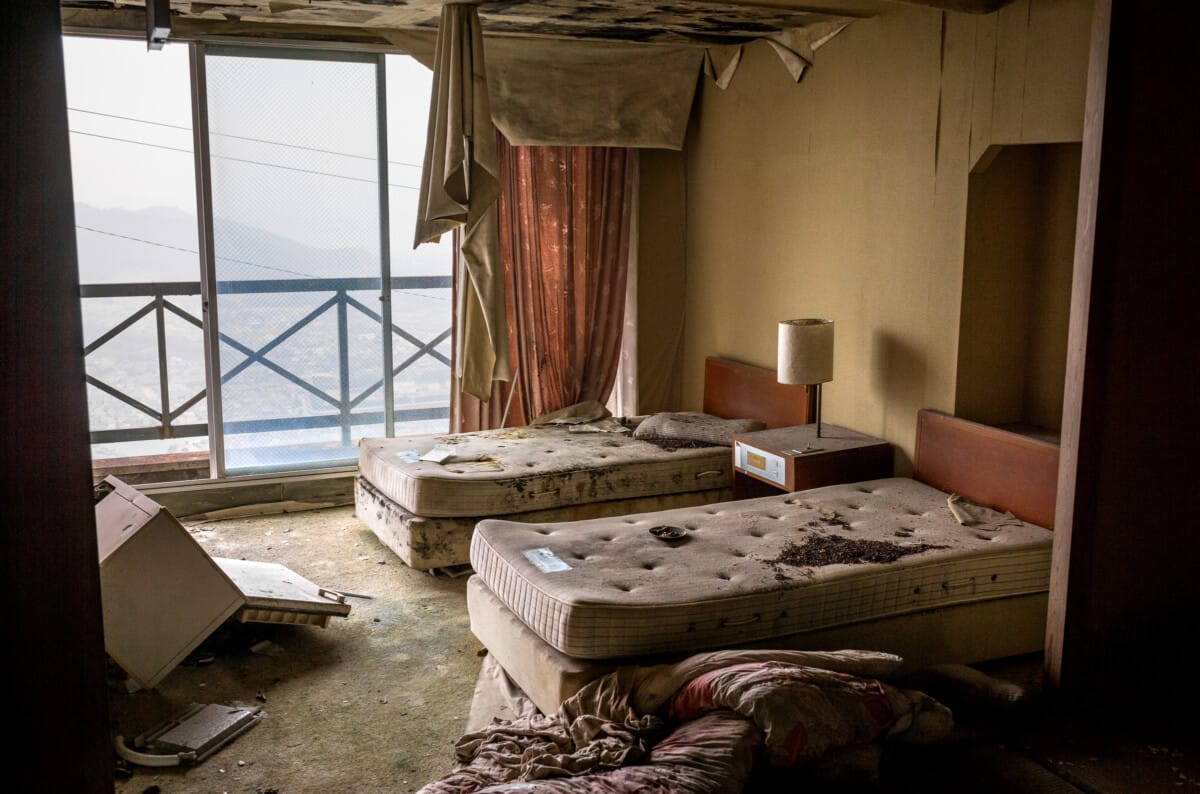
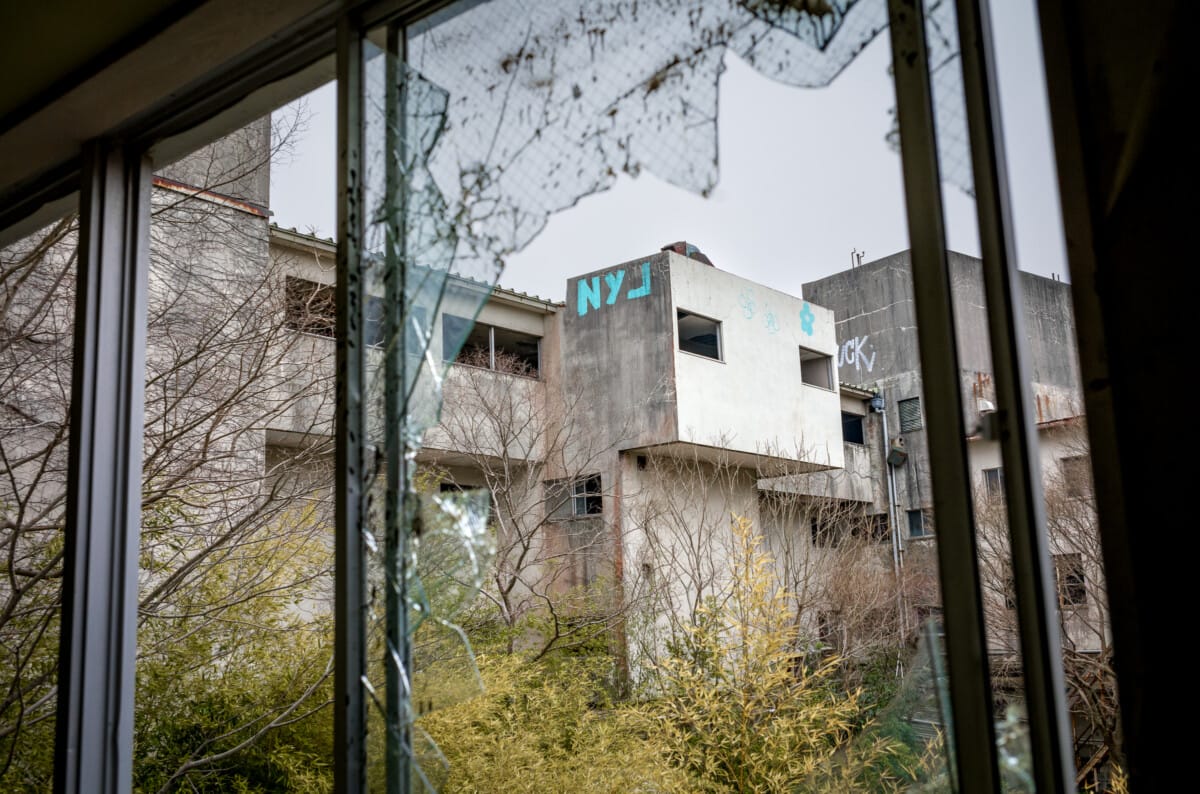
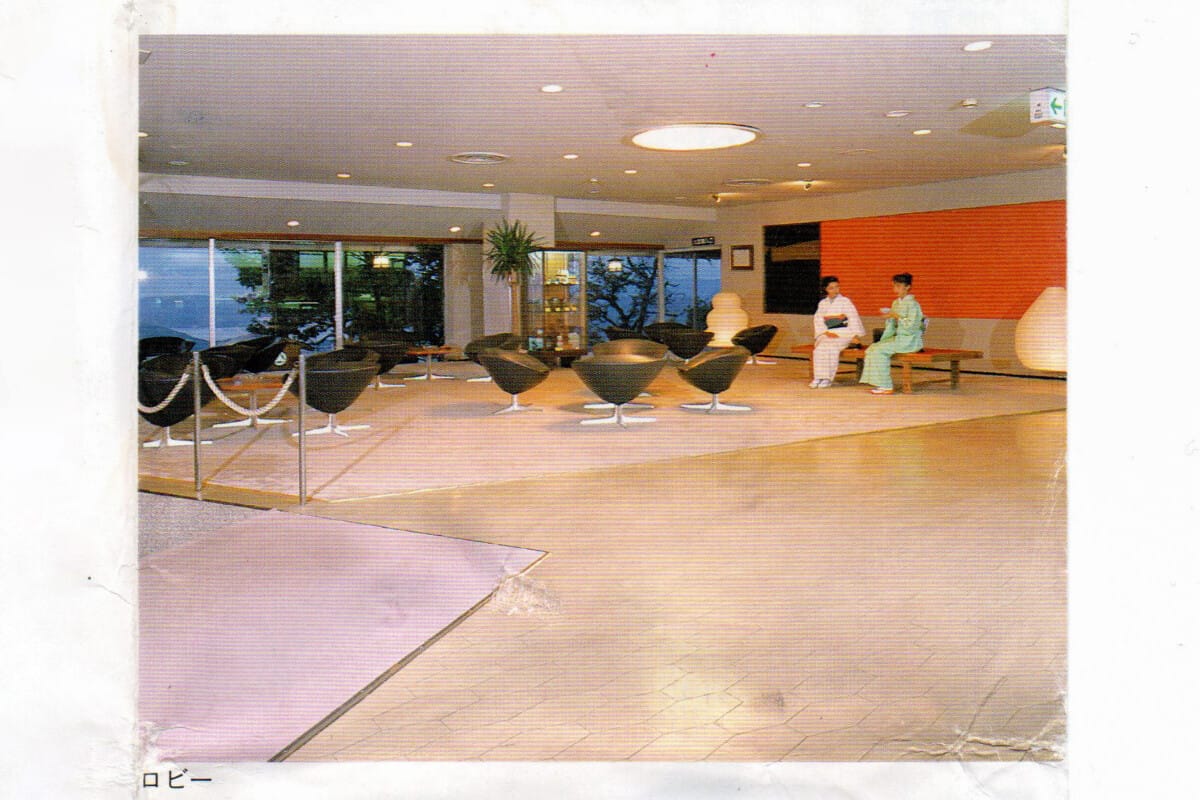
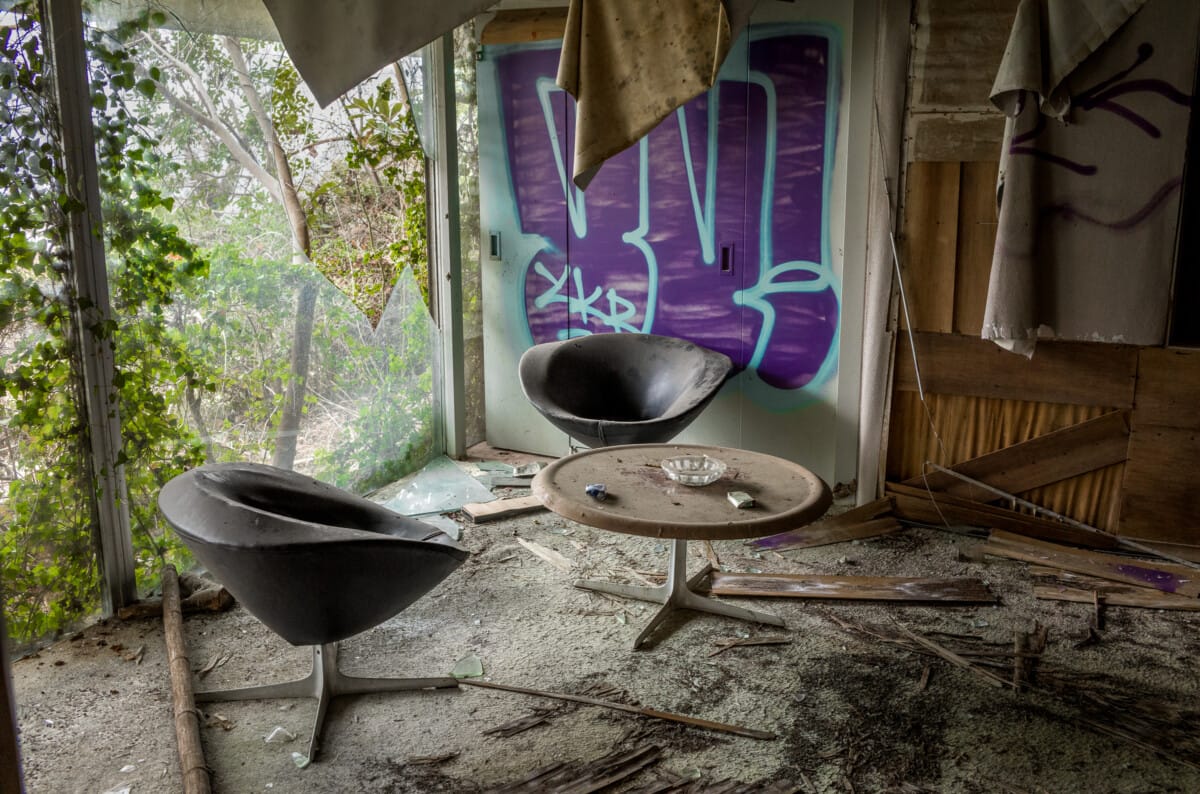
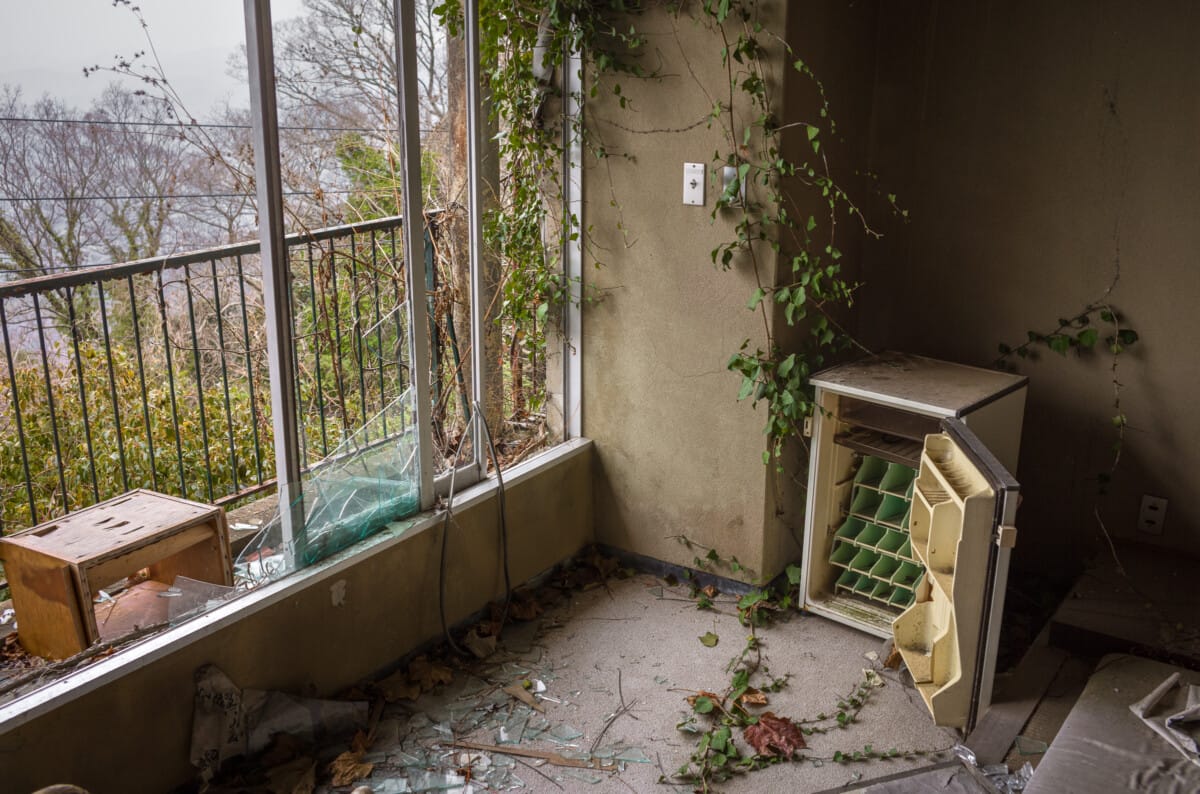
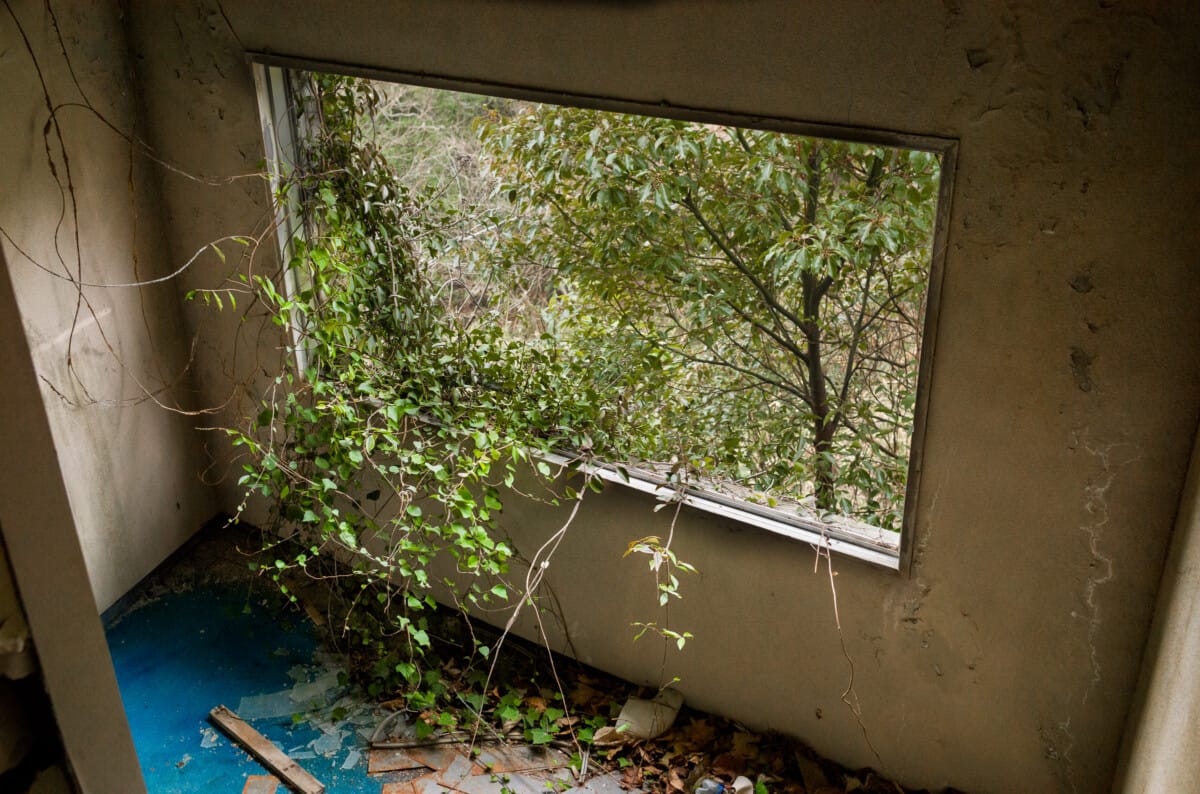
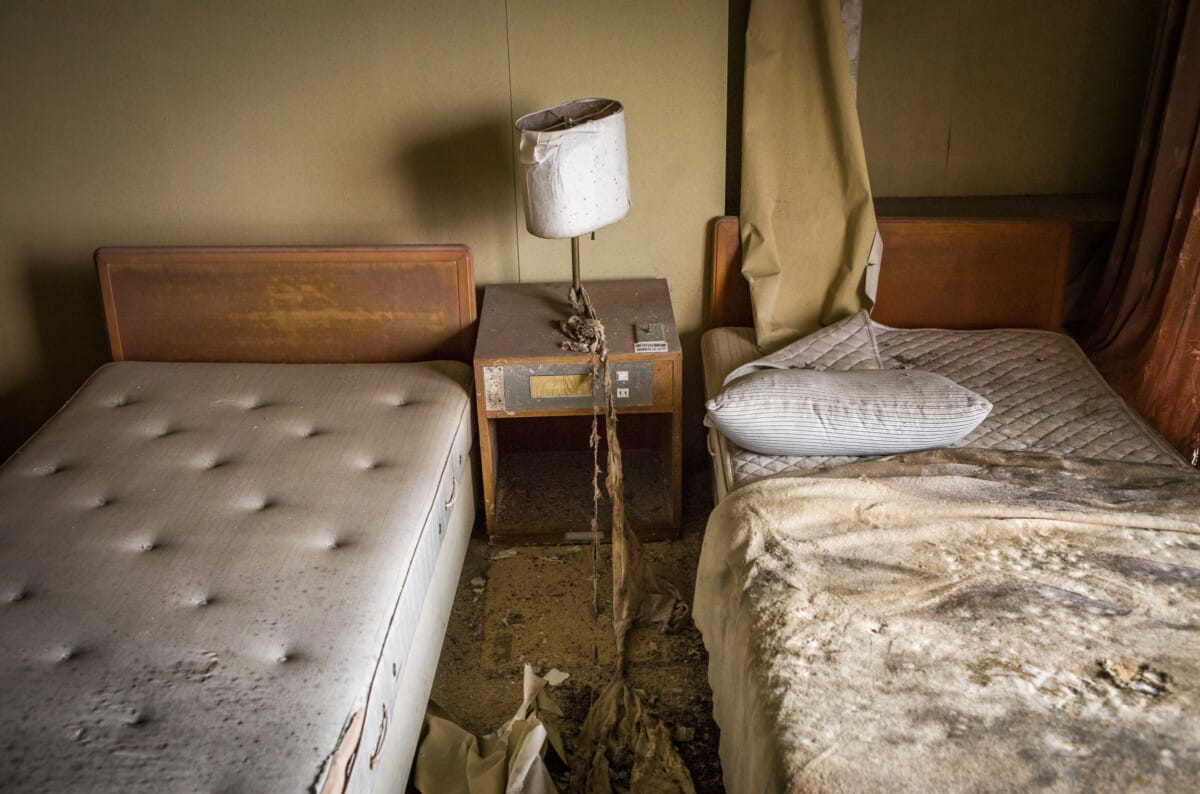
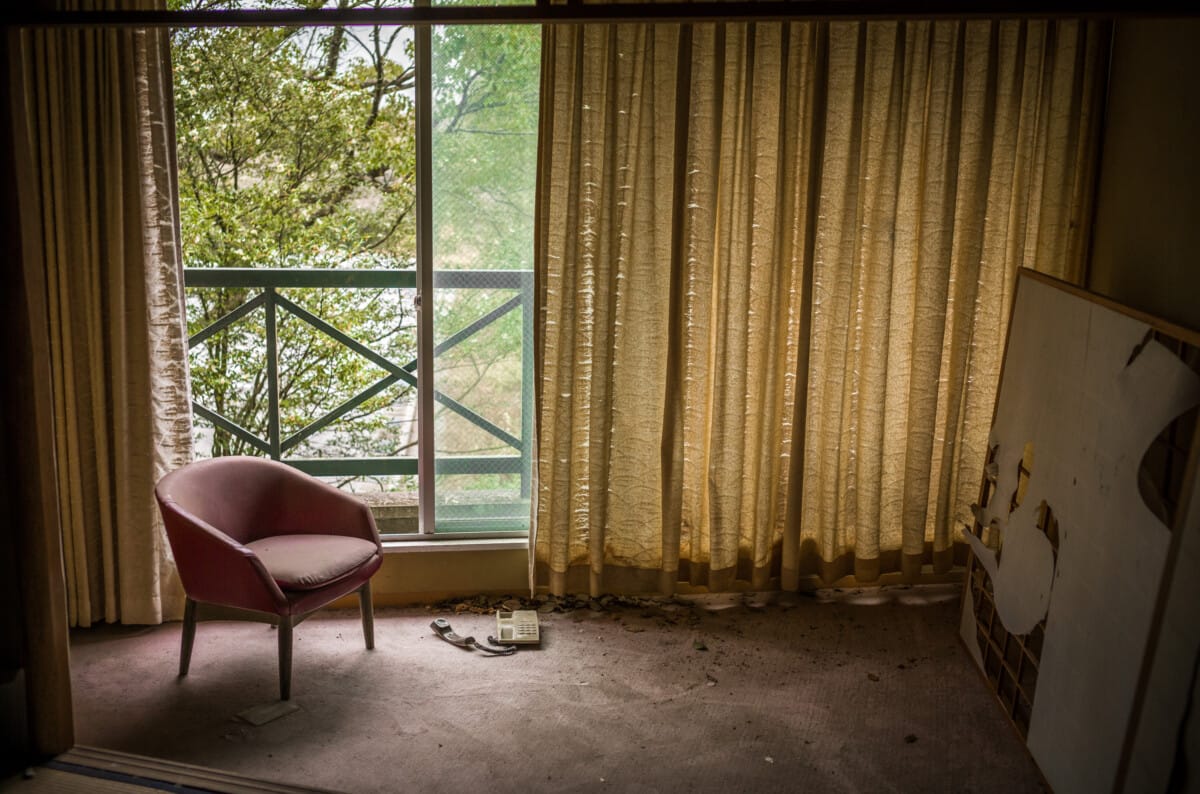
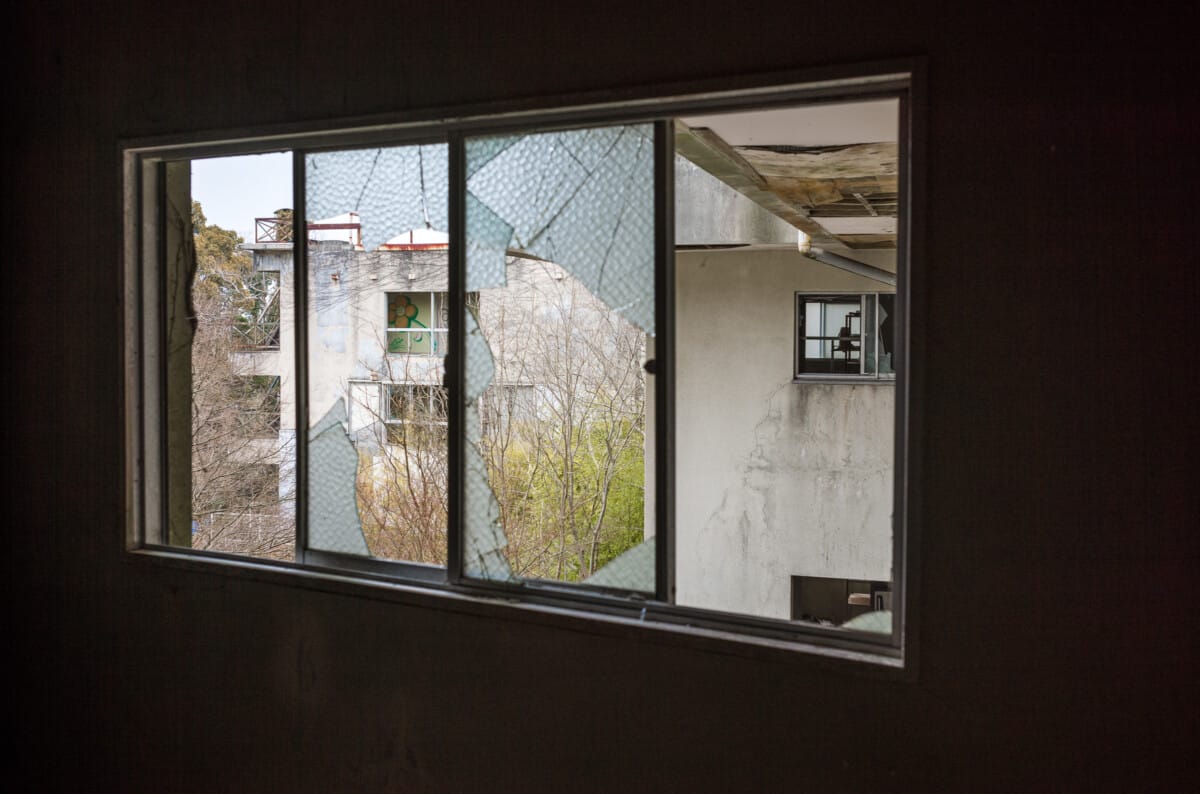
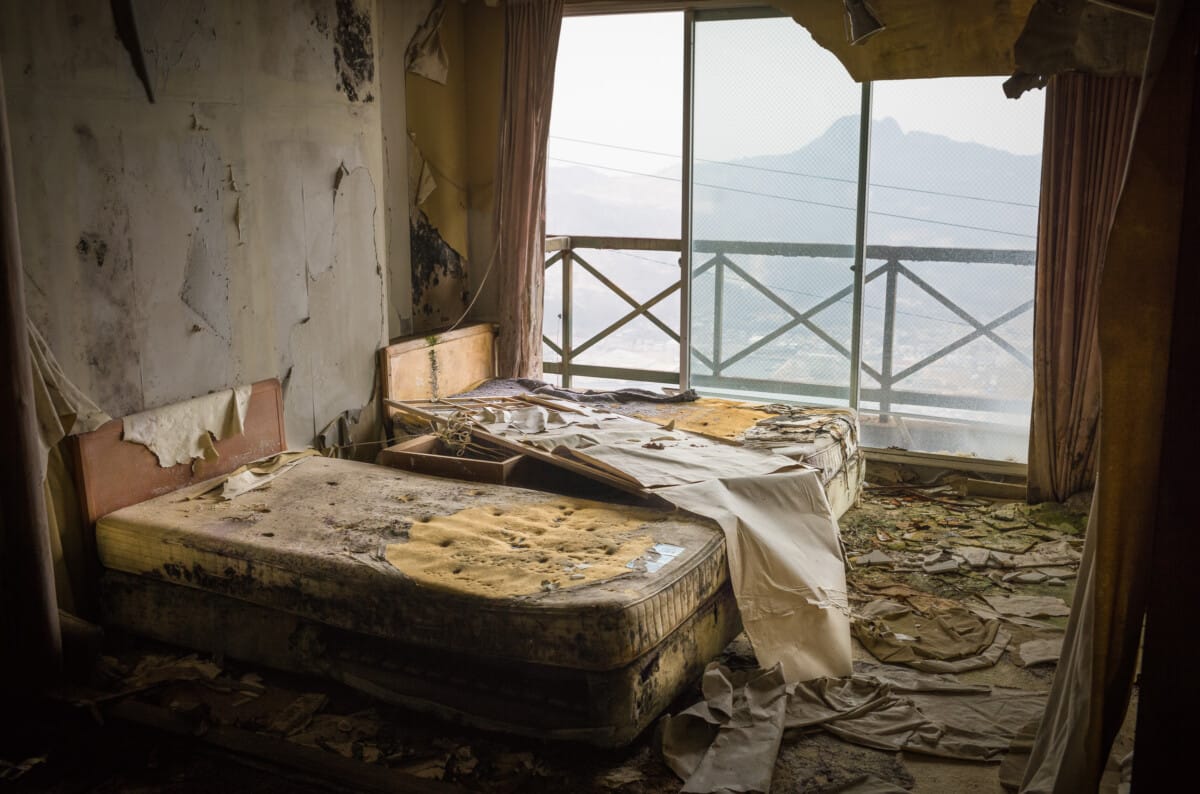
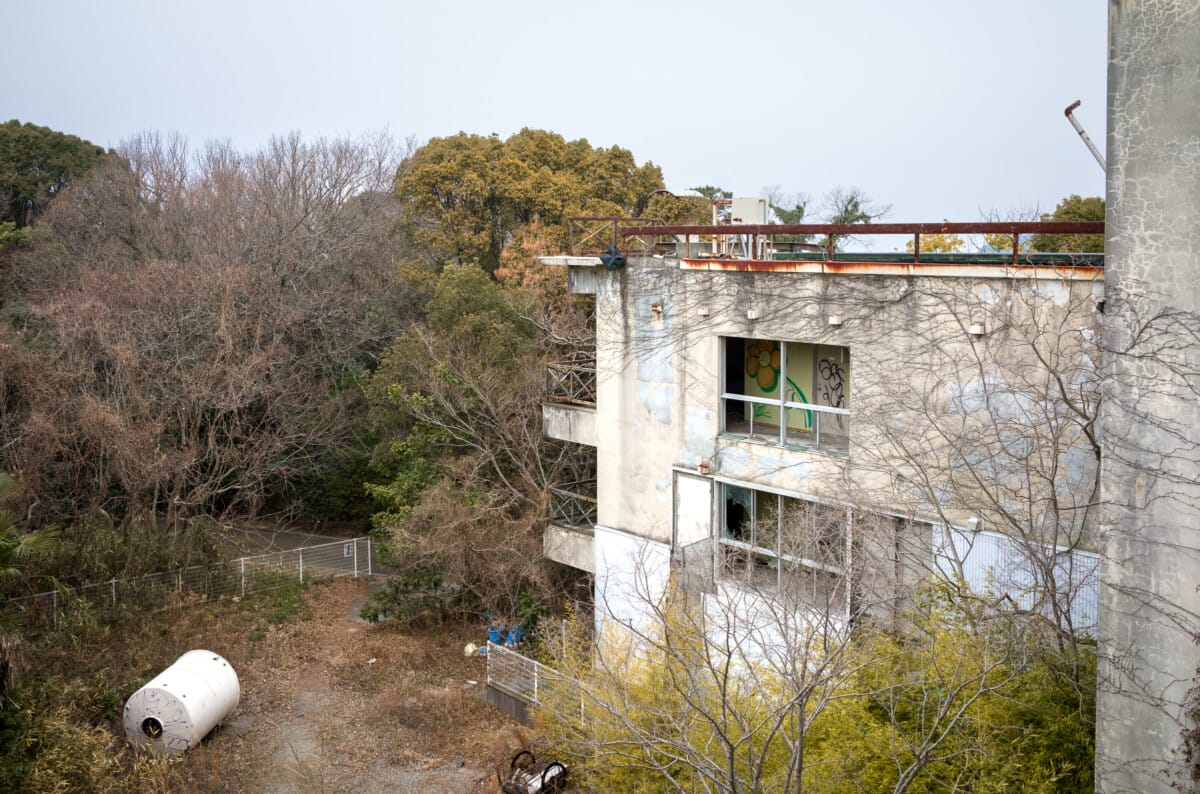
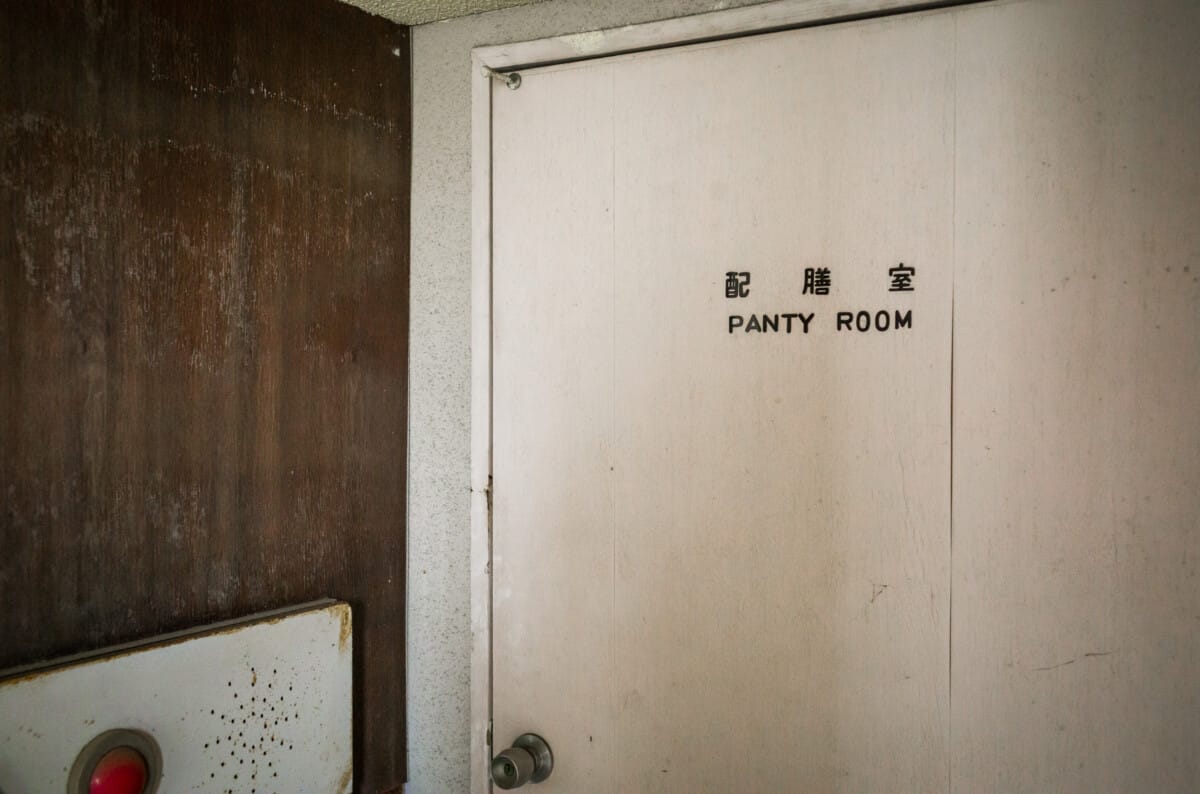
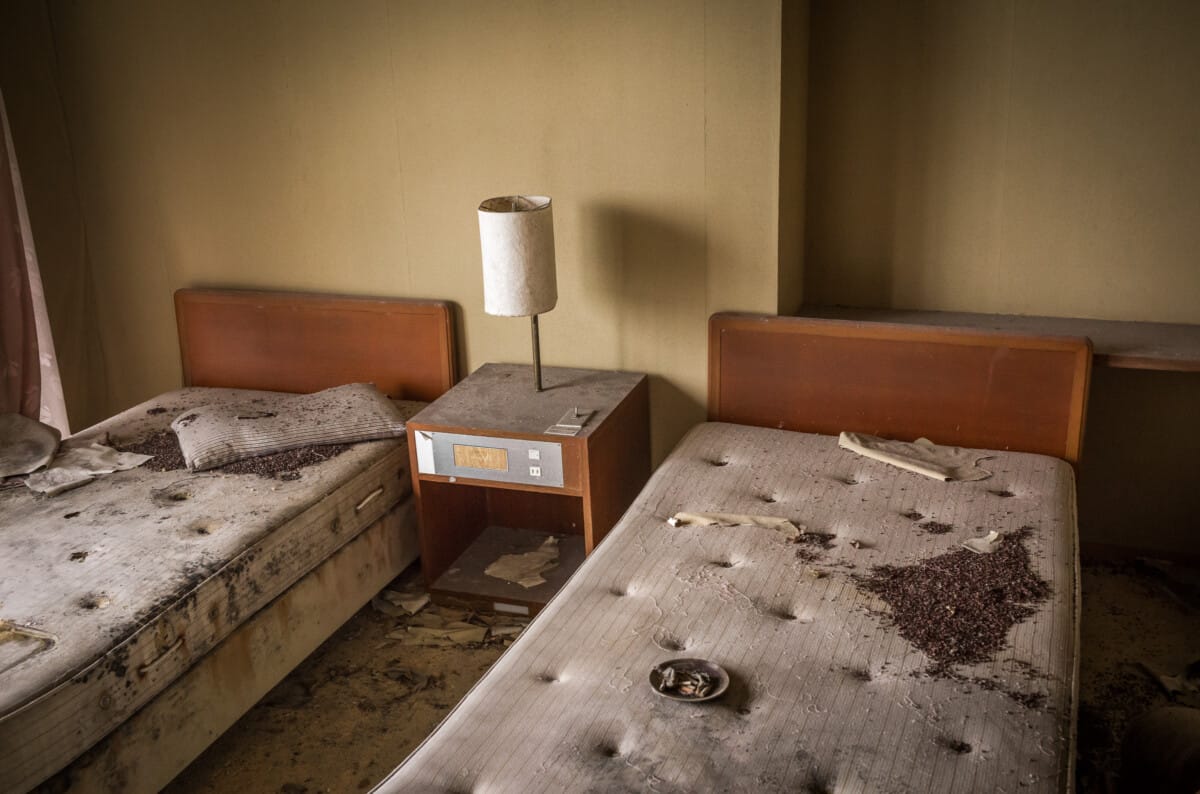
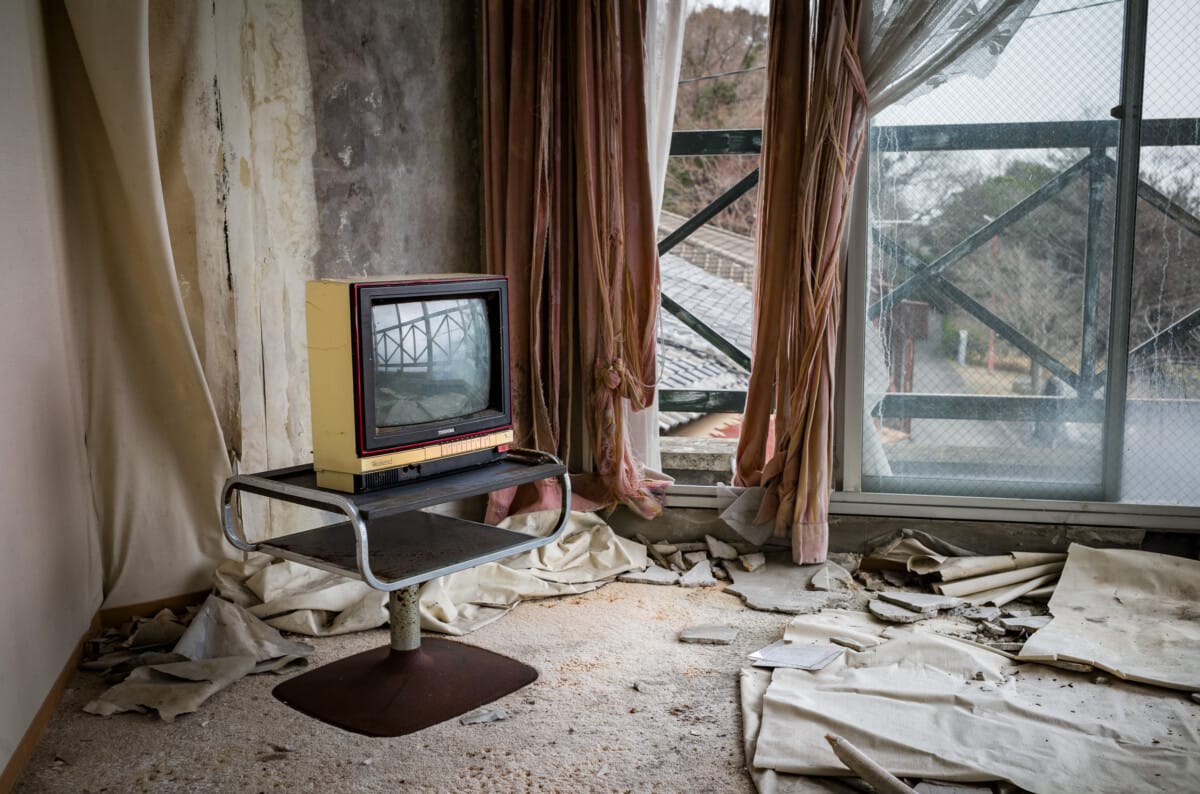
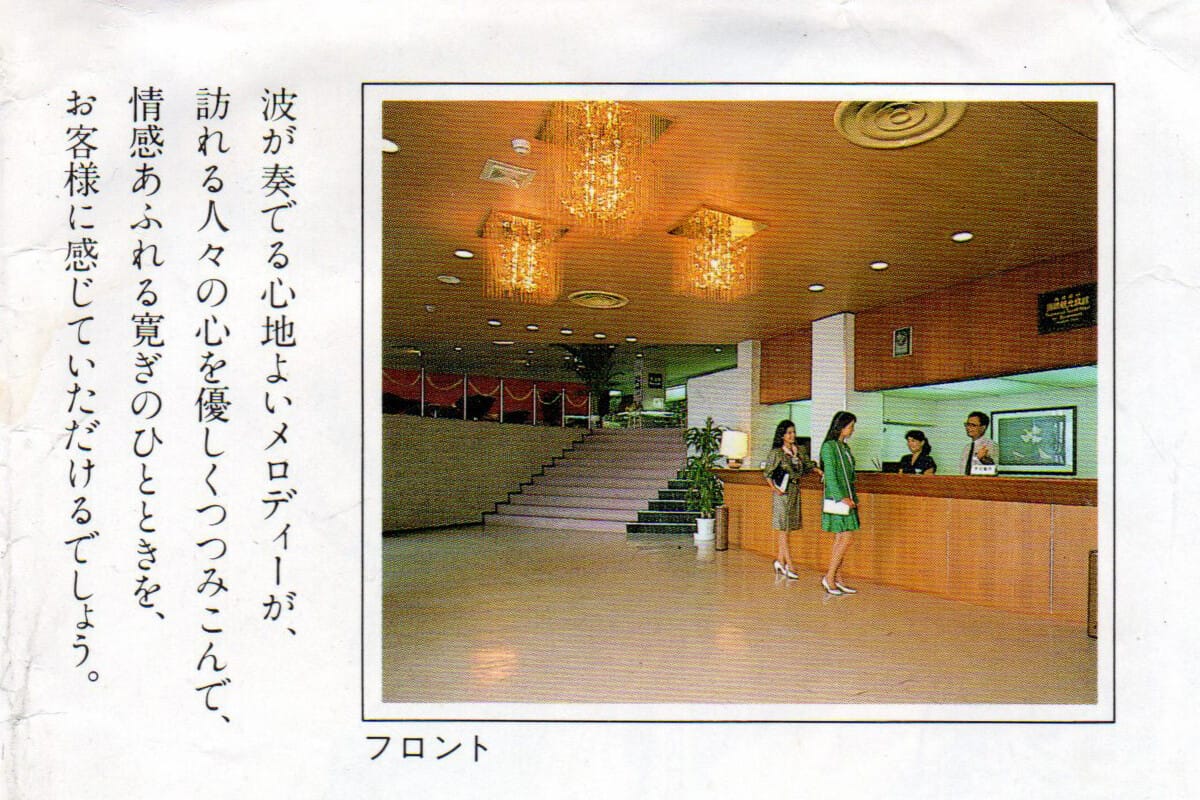
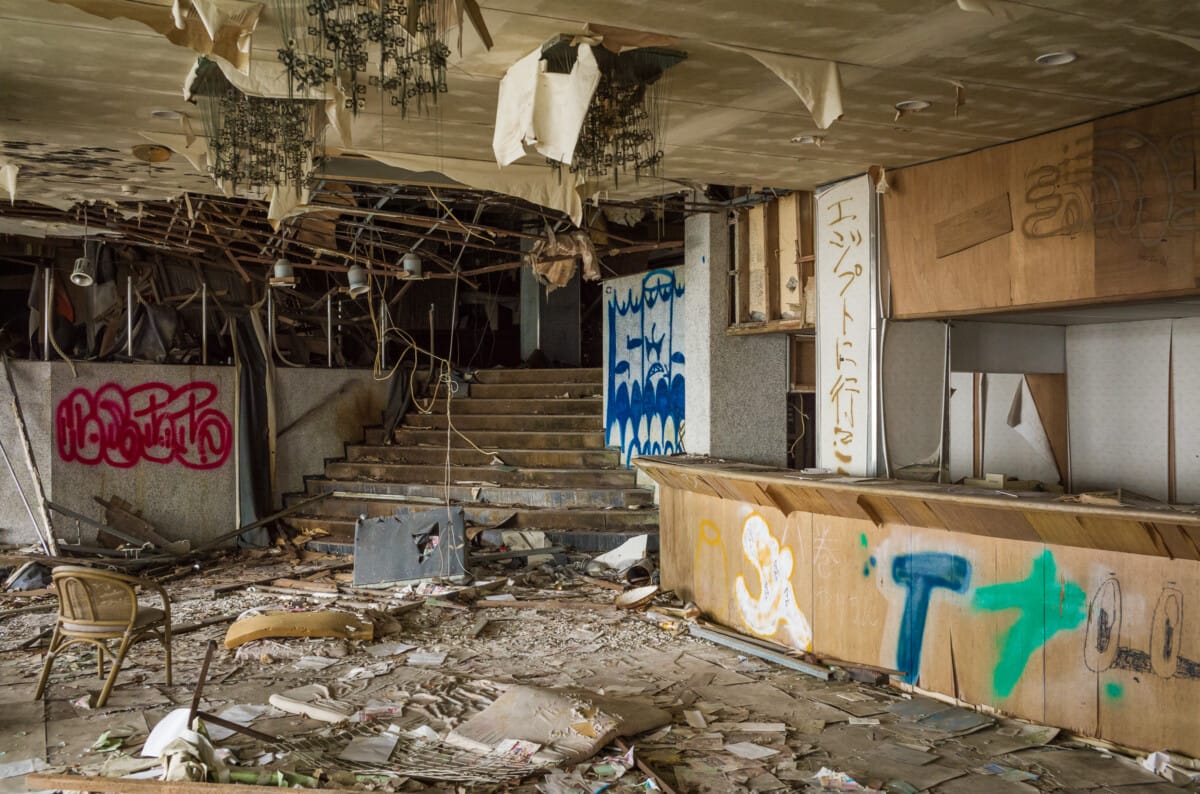
Sean says
Man these are super cool. I’d love to explore somewhere like this. So awesome!
DavidB says
Wow.
I know Haikyo explorers never reveal where they find the buildings, and while I’m not one, I’m not going to betray the secret. However, I totally know where this hotel is, and walking in front of it kinda give me the creeps. The most disturbing thing is the smell coming out of it, that I can only describe as “rotting plastic.” (I don’t know what the smell actually is, but that’s the feeling it gives me)